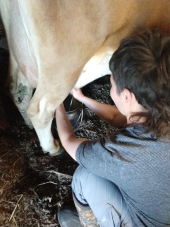









“Improving the plantings and productivity of baobab, to take a single example, would improve not just the rural landscape but also the social landscape, economic landscape, and even the topography of human health. Moreover, the improvement of baobab is a practical matter well within the capability of plant lovers, horticulturists, philanthropists, activists, educators, entrepreneurs and—most of all—innovative inhabitants of the lands where baobab trees thrive.”
Seeking a long-term partner to establish forest garden. Keen to find that person and happy to just make some friends. http://www.permies.com/t/50938/singles/Male-Edinburgh-Scotland-seeks-soulmate
 1
1




 we can but hope
we can but hope
Living in Anjou , France,
For the many not for the few
http://www.permies.com/t/80/31583/projects/Permie-Pennies-France#330873

|
I think he's gonna try to grab my monkey. Do we have a monkey outfit for this tiny ad?
Christian Community Building Regenerative Village Seeking Members
https://permies.com/t/268531/Christian-Community-Building-Regenerative-Village
|






